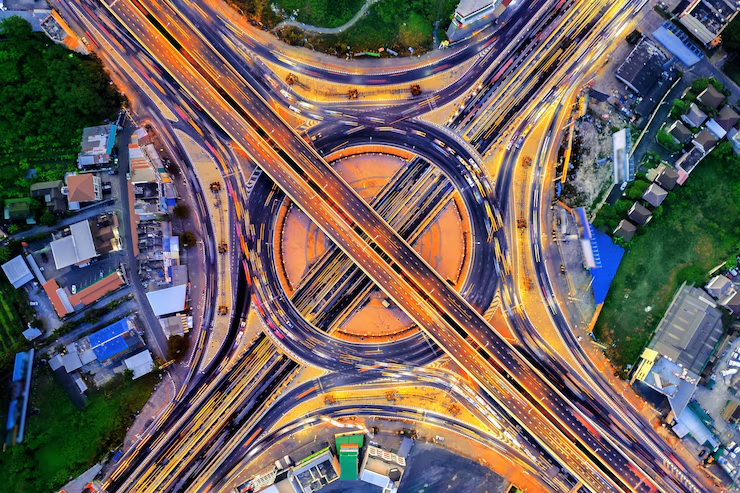In the age of smart cities and digital transformation, Modern Intersection Management Systems are no longer optional — they are essential. Urban congestion, rising vehicle populations, and increasing pedestrian traffic demand smarter solutions for smoother, safer intersections. This article delves into seven expert-approved strategies that define the evolution of Modern Intersection Management Systems and how they revolutionize traffic control and road safety.
Adaptive Signal Control Technology (ASCT)
One of the most transformative strategies in modern traffic engineering is Adaptive Signal Control. Traditional signal timing relies on static schedules, often failing to accommodate fluctuating traffic conditions. In contrast, Modern Intersection Management Systems that use ASCT dynamically adjust the timing of red, yellow, and green lights based on real-time traffic data.
Adaptive systems reduce congestion by:
- Monitoring real-time vehicle flow using sensors
- Adjusting signal timings to avoid unnecessary delays
- Coordinating with nearby intersections for synchronized flow
Cities that implement ASCT have reported up to a 20% improvement in traffic flow and a significant reduction in emissions due to decreased idling.
Integration of Intelligent Traffic Systems (ITS)
Another key pillar of Modern Intersection Management Systems is their integration with broader Intelligent Traffic Systems (ITS). ITS infrastructure combines hardware (like cameras and sensors) with software to monitor and respond to traffic in real time.
By integrating ITS into intersection management, municipalities can:
- Detect traffic incidents as they occur
- Communicate with autonomous or connected vehicles (V2X)
- Provide drivers with live updates through dynamic message signs or mobile apps
ITS-supported intersections are capable of improving both traffic safety and efficiency, aligning with modern urban planning goals.
Implementation of AI and Predictive Analytics
Artificial intelligence is a game changer for Modern Intersection Management Systems. AI-powered platforms can predict congestion before it happens by analyzing historical and real-time data. Predictive models help traffic signal controllers prepare for upcoming volume spikes — such as during sports events or emergencies.
Benefits of using AI include:
- Enhanced incident response times
- Forecasting daily traffic patterns
- Automating complex signal timing decisions
Predictive analytics also enable intersections to adapt to seasonal or long-term shifts in urban traffic behavior, making systems more resilient and efficient.
Connected Vehicle Infrastructure (V2X Communication)
Modern Intersection Management Systems are embracing Vehicle-to-Everything (V2X) communication to connect infrastructure with vehicles. This technology allows intersections to “talk” to vehicles and vice versa, enhancing situational awareness for both drivers and control systems.
V2X technology enables:
- Emergency vehicle preemption (clearing lanes for ambulances)
- Signal phase and timing (SPaT) alerts to inform drivers of light changes
- Prioritization for public transport, reducing bus delays
With V2X, intersection systems become proactive rather than reactive — they predict and prevent collisions rather than just respond to them.

Smart Traffic Light Systems
Smart traffic lights are at the core of Modern Intersection Management Systems. Unlike traditional systems, smart lights operate using sensor data, cameras, and connectivity tools to make intelligent decisions. They respond to pedestrian movement, vehicle congestion, and even weather conditions.
Features of smart traffic lights include:
- Pedestrian detection and extended crossing time for elderly users
- Automatic adjustments during low-traffic hours
- Emergency vehicle override
These lights often work in harmony with cloud-based traffic management systems, offering centralized control and faster updates when needed.
Data-Driven Traffic Signal Controllers
At the heart of every smart intersection lies a traffic signal controller, which interprets data and executes timing plans. In Modern Intersection Management Systems, controllers are no longer simple timers — they are intelligent processors capable of integrating with cloud platforms, AI models, and vehicle data.
Advanced signal controllers enable:
- Remote monitoring and diagnostics
- Coordination with nearby signals for corridor optimization
- Real-time decision-making based on traffic density
They also support multimodal prioritization, giving preference to bicycles, pedestrians, or public transit when necessary.
Sustainability and Environmental Optimization
An often overlooked but critical strategy in Modern Intersection Management Systems is environmental optimization. Traffic congestion contributes significantly to air pollution and carbon emissions. By streamlining traffic flow and reducing stop-and-go driving, these systems minimize ecological impact.
Sustainable features include:
- Eco-driving recommendations through connected apps
- Energy-efficient LED signals
- Solar-powered intersection infrastructure
Some systems even include environmental sensors that help in enforcing eco-zones, ensuring only low-emission vehicles enter certain areas during peak times.
Why Modern Intersection Management Systems Matter Today
With urban populations surging and mobility demands evolving, municipalities must adopt smarter ways to manage intersections. Modern Intersection Management Systems offer a robust solution that improves safety, boosts traffic efficiency, and aligns with sustainability goals.
Implementing these strategies can lead to:
- Fewer traffic collisions and fatalities
- Reduced commuter frustration and travel time
- Better utilization of infrastructure investment
- Enhanced integration with autonomous and electric vehicle ecosystems
By leveraging technology, cities not only solve traffic problems but also future-proof their infrastructure for the next generation of transportation.
Final Thoughts
From AI-driven analytics to smart traffic lights and V2X communication, these seven strategies represent the cutting edge of Modern Intersection Management Systems. By implementing them, cities and municipalities can create safer, more efficient, and environmentally friendly intersections.
Whether you’re an urban planner, transportation engineer, or policymaker, understanding and applying these innovations is key to building resilient and future-ready road networks.
Modern Intersection Management Systems aren’t just about controlling traffic — they’re about transforming the entire commuting experience.

